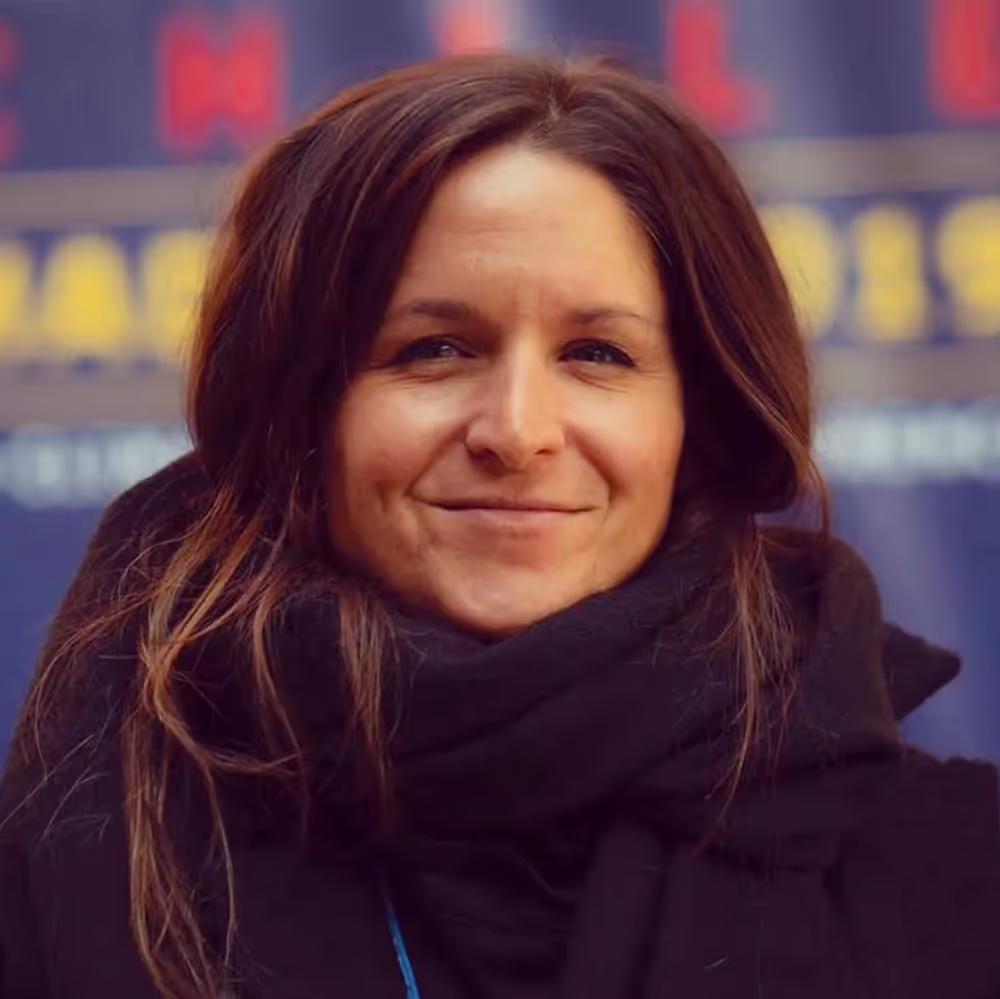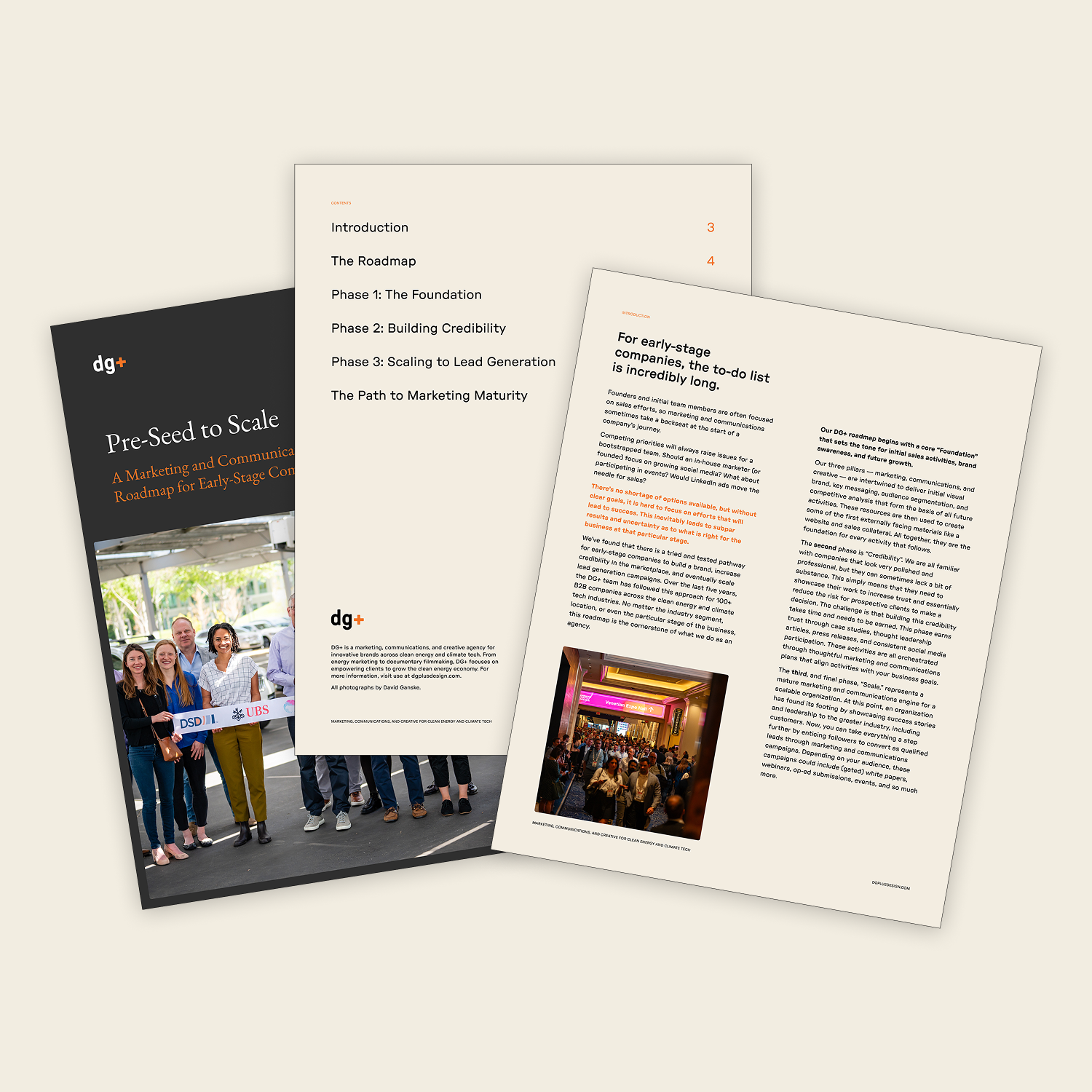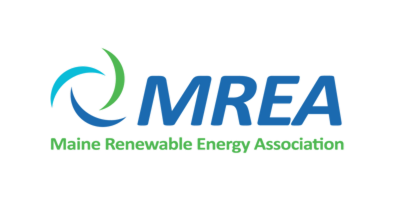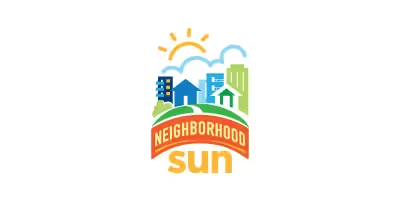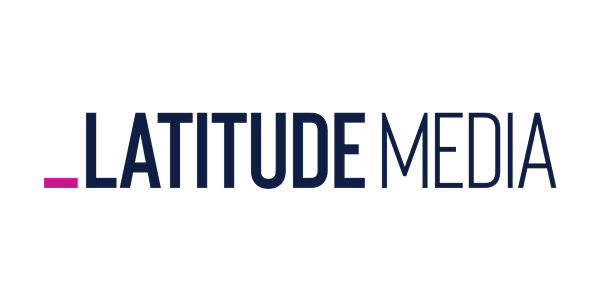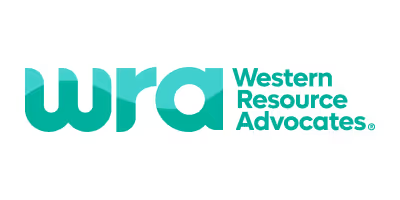As one of the clean energy industry's most influential events, RE+ offers unparalleled opportunities to connect with a wide range of potential partners, showcase your brand to an international audience, and drive business forward. And guess what? The companies that get the most out of RE+ are already planning for North America’s largest clean energy conference.
Each year, too many cleantech and renewable energy companies wait until late summer to get serious about RE+ strategy. That delay often leads to a last-minute scramble, resulting in missed meetings, a rush to get materials printed, unclear messaging, and untapped opportunities.
This year, we at DG+ are encouraging clean energy companies to start early. To help, we’ve developed this practical, no-fluff guide to preparing for RE+ with intention. Whether you're a seasoned attendee or it's your first time, here’s what you can do to make the most of the biggest renewable energy event of the year.
Set clear marketing and business development goals
Before diving into the specifics, take a step back and consider what you want to achieve at RE+. Your goals should ladder up to larger business priorities and be specific enough to guide decision-making. We recommend following the SMART framework (Specific, Measurable, Achievable, Relevant, and Time-bound).
Instead of vague ambitions like “get your name out there” or “connect with EPCs,” think about concrete targets, such as:
- Have 100 meaningful conversations with industry professionals at your booth
- Schedule five meetings with high-value EPC partners
- Increase landing page traffic by 25% during the week of the conference
- Identify three new vendor relationships aligned with next year’s project pipeline
To get started, reflect on goals across these categories:
- Lead generation: How many sales leads do you aim to generate? How will you evaluate leads and follow up after the event?
- Brand awareness: Do you want to showcase your participation at RE+? Do you have any goals for social media outreach, speaker events, or booth visits?
- Education: Are there new products or solutions that you want to explore? Should certain employees be going to training sessions? How will you track any new learnings?
- Partnerships: Are you looking to find investors or other partners? How many new partnerships or collaborations do you want to secure?
Keep in mind that you can have multiple goals for this conference but don’t have to cover everything with your RE+ presence — in fact, you shouldn’t. If your list is starting to get long, try to limit yourself to three must-dos. Remember to focus on what you can meaningfully achieve with the team, time, and resources that you’ve got.
Now that you have some general targets in place, it’s important to communicate these expectations to your team. You can tailor goals to specific employee types to help guide individual employees’ efforts. The table below shows some examples of this in practice.
Table 1: Sample conference activities and metrics by team
| Team |
Goals & Activities |
Metrics |
| C-Suite / Executives |
Business development
Meet with current and potential investors
Meet key partners and clients
|
Meetings with existing clients
Meeting with partners
Meetings with investors
|
|
| Sales |
Business development
Meet with current and potential investors
Meet key partners and clients
|
Meetings with potential customers
Meetings with existing customers
Lead to opportunity conversion rate
Lead to customer conversion rate
Sales qualified leads
|
| Marketing & Communications
|
Business development
Attract booth visitors to showcase products and services
Amplify activities on social media and in newsletters
|
Booth visitors
Social media engagement
Website page views (ex. Landing page or article)
Meetings booked
Marketing qualified leads
|
| Engineering & Operations
|
Education
Research new technologies
Gather intelligence on competitor products
|
Meetings with potential partners
Meetings with potential vendors
|
Your team’s goals may differ — and that’s okay. The key is ensuring each person understands their individual targets, how success will be measured, and how their efforts contribute to shared objectives. SMART goals make expectations crystal clear, keep teams focused, and allow you to assess your performance once the conference wraps.
Identify key contacts and stakeholders
With thousands of attendees and exhibitors, RE+ can be noisy and overwhelming unless you know exactly who you’re targeting.
Start now by:
- Sharing about your team’s attendance on LinkedIn and other applicable channels
- Reviewing last year’s attendee list, if you have access
- Identifying prospects, media contacts, and potential partners you want to engage
- Segmenting targets into tiers (e.g., high-priority meetings vs. “nice to connect”)
- Researching contact info and relevant context
It’s also a good time to start monitoring LinkedIn posts about RE+, as many attendees begin sharing updates or availability months in advance. We recommend using a shared document or spreadsheet to track your outreach list and assigning ownership of certain contacts to individual team members.
Hone your message
Consistency in messaging is key at large events like RE+. No matter who is representing your organization at the conference, it is paramount that each person knows how to talk about your business with confidence and clarity. You can start by preparing answers to the following questions:
- How would you describe your company or organization in 30 seconds?
- How would you describe your role in 30 seconds?
- What sets your products or services apart from the competition?
- What are the main points you want every attendee to remember about your company?
As you think of answers to these questions, write down your key talking points for each — aim for no more than three per answer. You can even practice delivering them orally in short, succinct sound bites. Use real-world examples and/or analogies where you can to make these messages more relatable.
In addition to these talking points, you should align as a team on what you can and cannot say publicly. Here are some ideas to consider:
- What are some public case studies or client work that you can share?
- Who can you name-drop as a reference?
- What information cannot be shared publicly?
- Are there any corporate metrics or deals that are confidential?
The DG+ team uses a simple rule of thumb for the above questions: If something has been shared publicly already, you are free to discuss it with others. If it isn’t public, it’s wiser to hold back in case there are any concerns.
Finally, it is a good practice to distribute a document that summarizes company talking points, dos and don’ts, and any key messages that everyone should know beforehand. These will serve as a guide but not a script — you want to empower your team to share these messages in their own words. Consider holding a brief training session to ensure everyone has a chance to practice sharing these key messages and feels confident in their delivery.
Conceptualize and begin design work for booths and collateral
Design is often one of the most time-consuming aspects of event planning and among the first things to suffer under a time crunch. Give your creative team the lead time they need to produce assets that are compelling, consistent, and on-brand. This is especially important if you’re working with an external party like a creative agency or freelance designer that would require additional communication.
By early July, you should already be:
- Finalizing your booth theme or visual concept, if applicable
- Gathering content and copy for printed handouts (brochures, flyers, fact sheets)
- Preparing digital materials (slide decks, QR code landing pages, lead forms)
- Mapping screen content or demo flows, if applicable
- Designing booth signage, uniforms, or swag items
At DG+, we recommend starting with a simple creative brief that outlines your booth goals, audience, and key messages. If you’re not ready for a full redesign, a few sharp, strategic updates can still make a major difference.
Prepare your schedule
With so much happening at RE+, it's important to have a well-organized schedule. The good news is that there is a lot of information available on the conference website, and RE+ organizers have mobile apps for download with everything you need. Here are some tips to get you started:
Browse all the activities and sessions on the RE+ website (find the full event schedule here) and identify sessions and workshops that align with your goals and interests. Make sure the right team members attend these to gather insights and make connections.
Block your calendar for important events (i.e. the SEIA member breakfast or the annual block party) and set up reminders. It’s easy to lose track of time in the convention center.
Schedule booth coverage to ensure that your booth (if you have one) is adequately staffed at all times with the right mix of personnel to handle inquiries, demos, and networking.
Reserve time for meetings in advance with any potential clients, partners, investors, or anyone else that you would like to meet.
Plan for post-event follow-up
Last but certainly not least is the post-event follow-up that too many people don’t consider. You’ve spent months planning, invested time and money in attending, collected contacts, had productive conversations, and maybe even signed a few deals. But your RE+ ROI depends heavily on what happens after you leave the show. Not everything that happens in Vegas should stay in Vegas.
Build your follow-up plan before the event so you can move quickly:
- Draft follow-up email templates ahead of time
- Assign CRM entry and contact ownership
- Block time on your calendar the week after RE+ for lead review and internal debriefs
- Plan a post-show content recap (blog, LinkedIn post, or newsletter)
If you’re reading this and feel like you’re already behind with your RE+ planning, don’t fret: DG+ is here to help. We’re well-versed in getting our clients prepared to fully execute a successful RE+ attendance (in addition to our own!). Reach out to hello@dgplusdesign.com to get started today.

